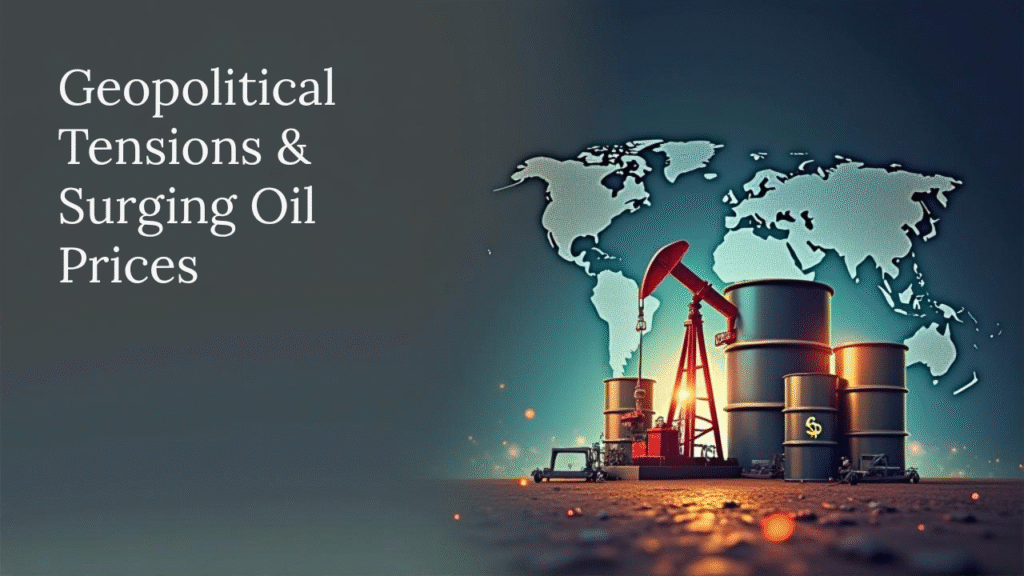
The recent escalation of conflict between Israel and Iran, marked by Israeli strikes on Iranian energy infrastructure including the critical South Pars gas field, has sent shockwaves through global markets. The resulting surge in oil prices—Brent crude soared over 7% to highs near $78.50 per barrel, and U.S. crude topped $75—has reignited fears of supply disruptions in a region responsible for roughly 20% of global oil exports. This article explores the multifaceted impact of these developments on global markets, commodities, investor behavior, and economic outlooks, supported by recent data and expert insights.
1. Oil Price Surge and Inflationary Pressures
The attack on Iran’s energy assets has injected a significant risk premium into oil prices. Brent crude futures settled at $74.65 per barrel after a 7.63% jump, the highest since April 2025. The South Pars field, shared between Iran and Qatar, is vital for regional gas supplies, and its disruption threatens energy exports from the Gulf, intensifying concerns about broader supply chain instability.
The potential closure of the Strait of Hormuz—through which nearly 19 million barrels per day transit—could severely constrict global oil supply. Analysts warn that if Iran retaliates by blocking this passage or targeting oil infrastructure, the world could see a supply cut of up to 2 million barrels per day, pushing prices even higher.
Higher energy costs are feeding into inflation worldwide, particularly in energy-importing countries. For example, India faces immediate risks to its current account deficit and inflation due to rising crude prices, with vulnerable sectors including oil marketing, auto manufacturing, consumer staples, and chemical producers. Elevated energy prices increase production and transportation costs, which cascade through the economy, pressuring consumer prices and potentially slowing growth.
2. Market Reactions: Stocks, Commodities, and Safe Havens
Stock Markets: Global equities have responded with heightened volatility and broad-based declines. U.S. indices like the S&P 500, Dow Jones, and Nasdaq fell between 1% and 1.7%, reflecting investor anxiety over geopolitical risks and inflationary pressures. Gulf markets were hit harder; Qatar’s stock market dropped nearly 3%, with energy and banking stocks such as Gas Transport and Qatar National Bank suffering steep losses.
Commodity Markets: Oil prices have surged dramatically, with Brent crude rising over 14% in the past month despite a year-to-date decline of about 11%. Natural gas and precious metals like gold have also rallied. Gold prices jumped over ₹1,800 points in Indian markets, reaching above ₹100,300 per 10 grams in MCX contracts, driven by geopolitical uncertainty and a weakening dollar. Gold’s technical support at ₹99,000 and strong volume acceptance signal sustained bullish momentum, making it a preferred safe haven.
Safe-Haven Assets: Investors are flocking to traditional safe havens such as gold, U.S. Treasuries, and the U.S. dollar amid market turbulence. Gold prices in global markets have surged to around $3,450 per ounce, reflecting increased demand for stability. The U.S. dollar’s relative strength further underscores its role as a refuge during periods of risk aversion.
3. Sectoral Impact and Investment Opportunities
- Energy Sector: Upstream oil producers like ONGC and Oil India have benefited from higher crude prices, while companies exposed to regional instability or downstream operations face headwinds.
- Gulf Region Stocks: Energy and banking sectors in the Gulf have declined sharply due to heightened geopolitical risks.
- Indian Market: Despite short-term volatility, brokers like Emkay Global maintain a cautiously optimistic outlook for Indian equities, favoring discretionary, technology, and materials sectors while underweighting financials and staples.
4. Investor Strategies Amid Uncertainty
Given the complex risk environment, investors are adopting diversified and risk-managed approaches:
- Safe-Haven Allocation: Increasing exposure to gold, U.S. Treasuries, and the U.S. dollar to hedge against inflation and geopolitical risk.
- Diversification: Reducing concentration in high-risk equities and diversifying across sectors and geographies to mitigate shocks.
- Selective Energy Investments: Targeting upstream oil and gas firms poised to benefit from sustained high prices, while avoiding companies with operational risks in conflict zones.
- Active Monitoring: Employing quantitative models and scenario analysis to anticipate market shifts and adjust portfolios dynamically.
Innovative financial instruments like buffered ETFs are gaining traction, allowing investors to limit downside risk while maintaining upside exposure during volatile periods.
5. Medium to Long-Term Outlook: Supply Dynamics and Energy Transition
Despite the near-term price spike, major financial institutions like J.P. Morgan forecast Brent crude prices to moderate to around $66 per barrel by the end of 2025 and further to $58 in 2026, driven by softening demand and increased OPEC production. OPEC members, including UAE, Kazakhstan, Iraq, and Kuwait, are ramping up production capacity, supported by over $10 billion annual investments from international oil companies in Middle East upstream projects.
Simultaneously, global energy investment is surging, with clean energy technologies attracting twice as much capital as fossil fuels. Solar PV investments are expected to reach $450 billion in 2025, with battery storage investments also rising sharply. This energy transition trend may exert downward pressure on fossil fuel demand over the medium term, moderating oil price spikes.
6. Conclusion: Navigating a Complex and Volatile Market Landscape
The Israel-Iran conflict and resulting oil price surge have introduced significant volatility and risk to global markets. Inflationary pressures are mounting, stock markets are jittery, and investors are recalibrating portfolios toward safer assets and strategic energy plays. While near-term risks are elevated, medium-term fundamentals suggest a potential easing of oil prices supported by increased supply and energy transition trends.
For investors, the key lies in disciplined risk management, diversification, and staying informed on geopolitical developments. Balancing exposure to safe havens with selective opportunities in energy and growth sectors can help navigate this uncertain environment.
Key Data Summary:
